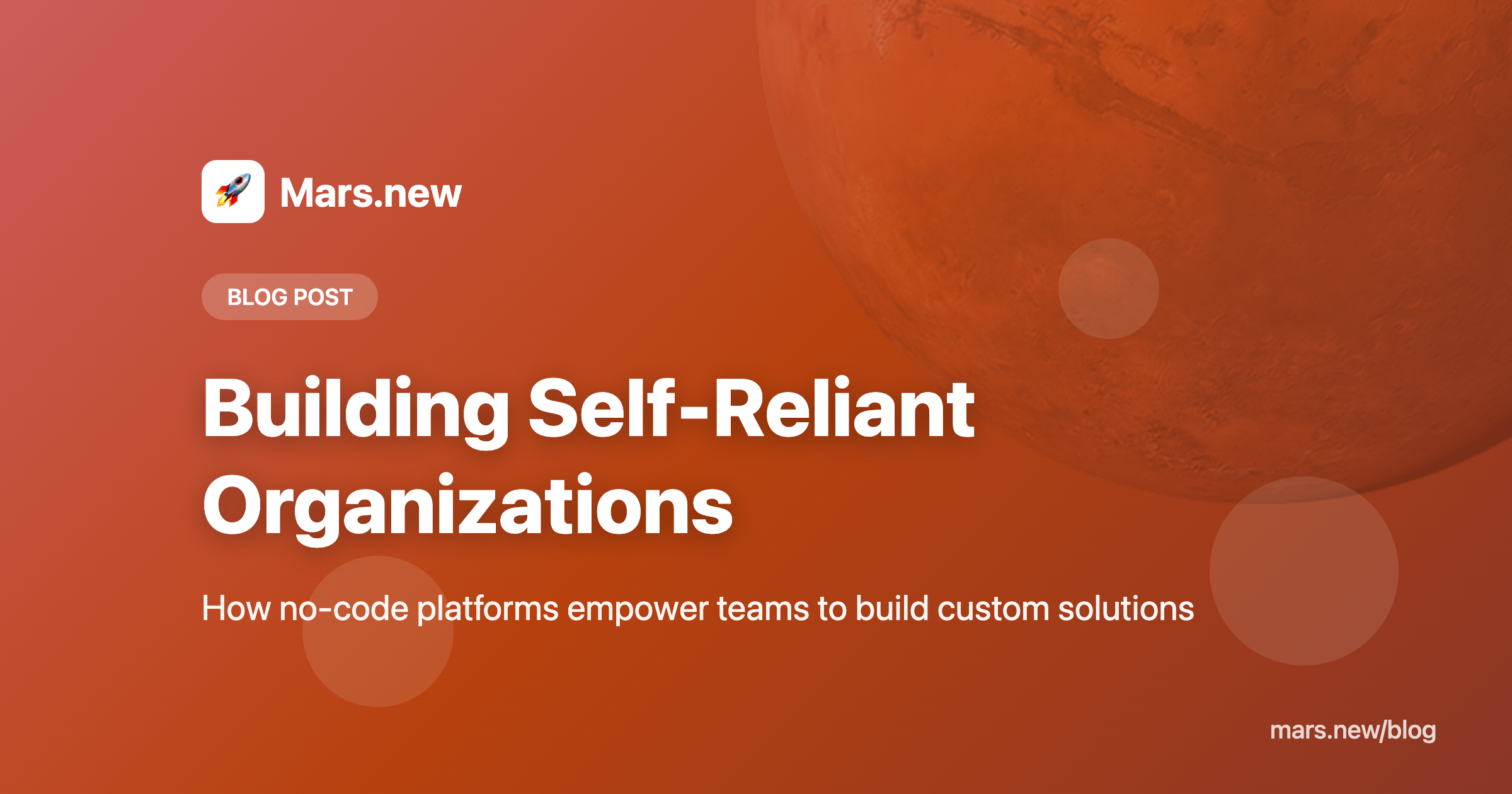Building Self-Reliant Organizations with No-Code
The software development bottleneck is real. IT departments are overwhelmed, vendors are slow to respond, and business needs keep accelerating. But what if your domain experts could build their own solutions?
The Vendor Dependency Problem
Most organizations are trapped in what we call "vendor dependency hell":
- Slow customization cycles: 6-12 months for simple feature requests
- High costs: $50,000+ for basic customizations
- Limited flexibility: One-size-fits-all solutions that don't quite fit
- Lock-in: Difficult and expensive to switch vendors
The No-Code Revolution
No-code platforms like Mars are changing this dynamic fundamentally. Here's why:
1. Domain Experts Become Builders
The people who understand the business problem best — your sales managers, operations leads, customer service directors — can now build their own solutions.
At a healthcare provider we work with, nurses designed their own patient intake system in 2 weeks. No developers needed. The result? A system that perfectly matches their workflow because it was built by people doing the actual work.
2. Speed of Innovation
Traditional development:
- Requirements gathering: 2-4 weeks
- Development: 8-16 weeks
- Testing: 4-8 weeks
- Deployment: 2-4 weeks
- Total: 4-8 months
With Mars:
- Design and build: 1-2 weeks
- Test and refine: 3-5 days
- Deploy: Same day
- Total: 2-3 weeks
3. Perfect Fit Solutions
Off-the-shelf software requires compromises. You adapt your processes to fit the software. With no-code, you build software that adapts to your processes.
Case Study: Manufacturing Operations
A mid-sized manufacturing company was using 7 different systems for production management:
- ERP for inventory
- Excel for scheduling
- Paper forms for quality control
- Email for change requests
- WhatsApp for team communication
- Separate system for maintenance
- Another tool for reporting
Their operations manager, with no coding background, used Mars to:
- Build a unified production management system
- Integrate with existing ERP via APIs
- Create mobile apps for the factory floor
- Set up automated reporting
- Deploy to 150 users
Time to build: 6 weeks
Cost: Zero (used existing Mars license)
ROI: 300% in first year
The Self-Reliant Organization
Self-reliant organizations share these characteristics:
✓ Reduced IT backlog: Domain experts handle their own tools
✓ Faster adaptation: Changes implemented in days, not months
✓ Lower costs: No expensive vendor customizations
✓ Better solutions: Built by people who understand the problems
✓ Competitive advantage: Move faster than competitors
Getting Started
Building self-reliance doesn't happen overnight. Here's a roadmap:
Phase 1: Pilot (Month 1-2)
- Choose one department
- Identify a specific pain point
- Build a simple solution
- Measure results
Phase 2: Expand (Month 3-6)
- Roll out to more departments
- Train power users
- Build internal best practices
- Create reusable components
Phase 3: Scale (Month 6+)
- Enterprise-wide deployment
- Integration with core systems
- Advanced automation
- Continuous innovation
Conclusion
The future belongs to organizations that can adapt quickly. No-code platforms like Mars don't just save time and money — they fundamentally change who can build software and how fast innovation happens.
Your domain experts are sitting on years of knowledge about how to improve your business. Give them the tools to act on it.
Ready to build self-reliance in your organization? Schedule a demo to see how Mars can help.
